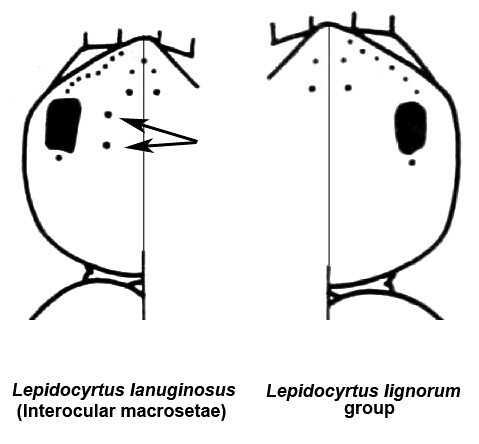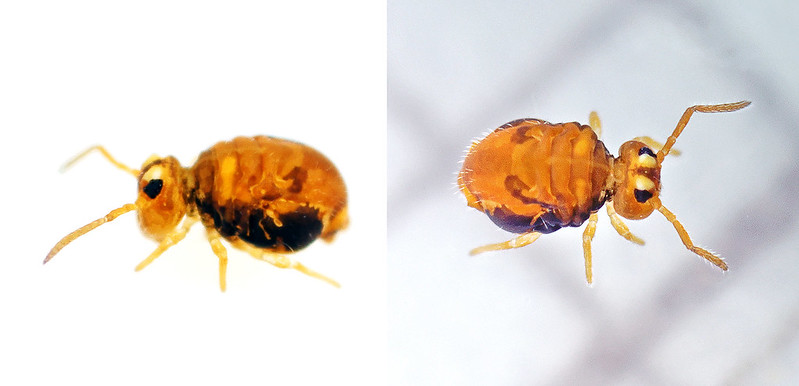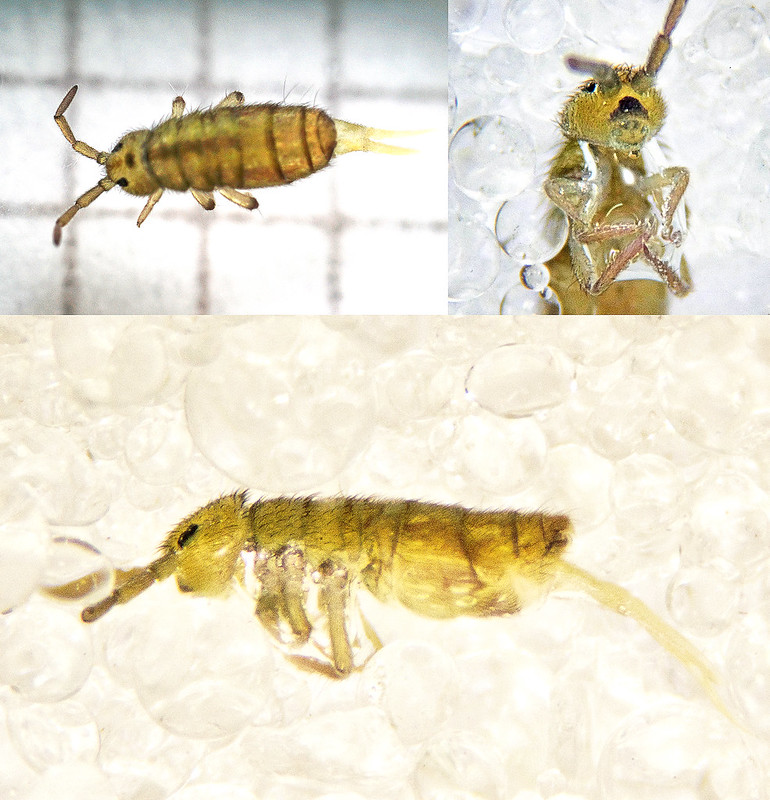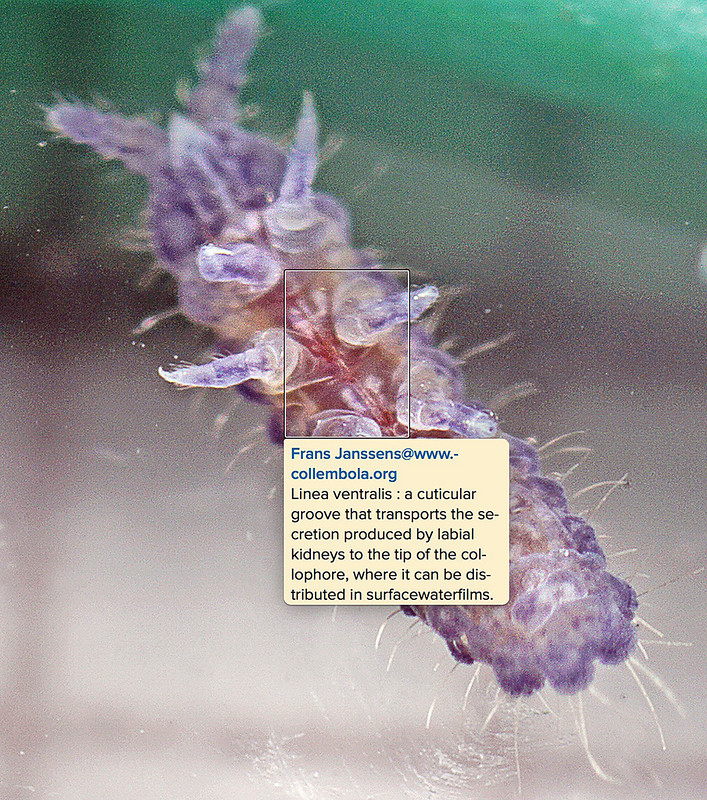
Every time I feel I'm making progress with Lepidocyrtus I immediately start to go backwards again. After an unproductive morning, I'm tempted to put this one down as Lepidocyrtus lanuginosus because I can see no evidence of scales on the legs or antennae, but frankly, I'm not at all confident. At least I know I'm not alone in struggling with this genus:
Mateos, E., Escuer, P., Buşmachiu, G., Riutort, M., & Álvarez-Presas, M. (2018) Untangling Lepidocyrtus (Collembola, Entomobryidae): new molecular data shed light on the relationships of the European groups. Invertebrate Systematics, 32(3), 639-651. https://doi.org/10.1071/IS17056
A redefinition of European species-groups is proposed based on chaetotaxy:
Lepidocyrtus curvicollis group
Lepidocyrtus lignorum group
Lepidocyrtus pallidus group
Lepidocyrtus lanuginosus group
Lepidocyrtus lusitanicus group
Zhang, B., Chen, T.W., Mateos, E., Scheu, S., & Schaefer, I. (2018) Cryptic species in Lepidocyrtus lanuginosus (Collembola: Entomobryidae) are sorted by habitat type. Pedobiologia, 68, 12-19. https://doi.org/10.1016/j.pedobi.2018.03.001
Lepidocyrtus lanuginosus separates into three major genetic lineages with one of these lineages being close to Lepidocyrtus cyaneus.
Anyway, a positive outcome in the end. Although I'm still unclear about the the identity of these specimens, I've seen the future and it's chaetotaxy:

























